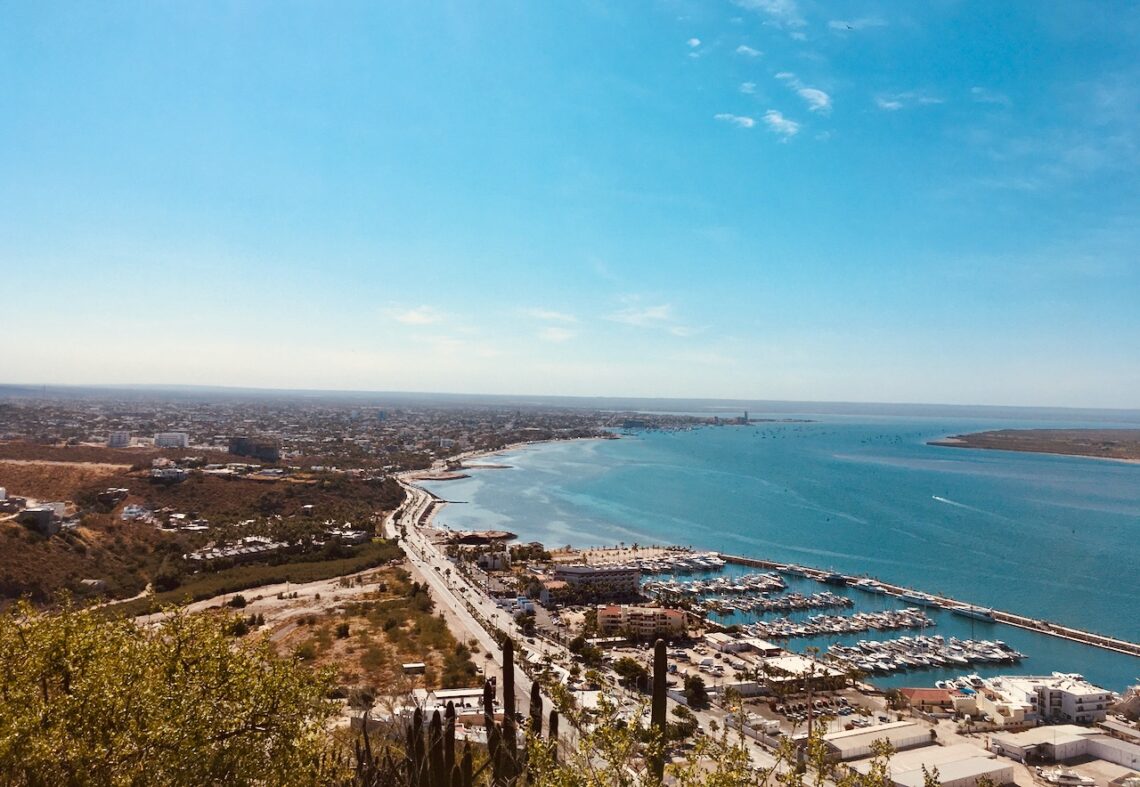
La Paz: Tale of Two Cities
Our guide book tells us that everyone ends up in La Paz. I knew it was a large place. I knew it was popular for long stays, that the outskirts were kind of a bummer, that there were excellent beaches nearby but maybe not in town, that it was place we needed to be to catch our ferry… I thought I knew what to expect and it really wasn’t that at all.
The road between Loreto and La Paz is fast, easy to do in a day. Be ready for a very windy course up and over the Gigantes at the start of the journey (not all the way back to the opposite coast), but for a long while after that things are a breeze. There are extra lanes, shoulders, merge lanes and more! A real Baja treat. And there are a couple decent sized towns out this way too – inland, agricultural, bustling.
Then you drop down, the blue line of the Sea of the Cortez back on the horizon, through the outskirts of a city that keeps failing to appear. We had to get Baja Ferries to reserve our upcoming crossing and had their office punched into my phone.* It looked pretty straightforward, La Paz laid out in a sensible grid with the map selecting what appeared to be a sensible, direct route. La Paz is not sensible.
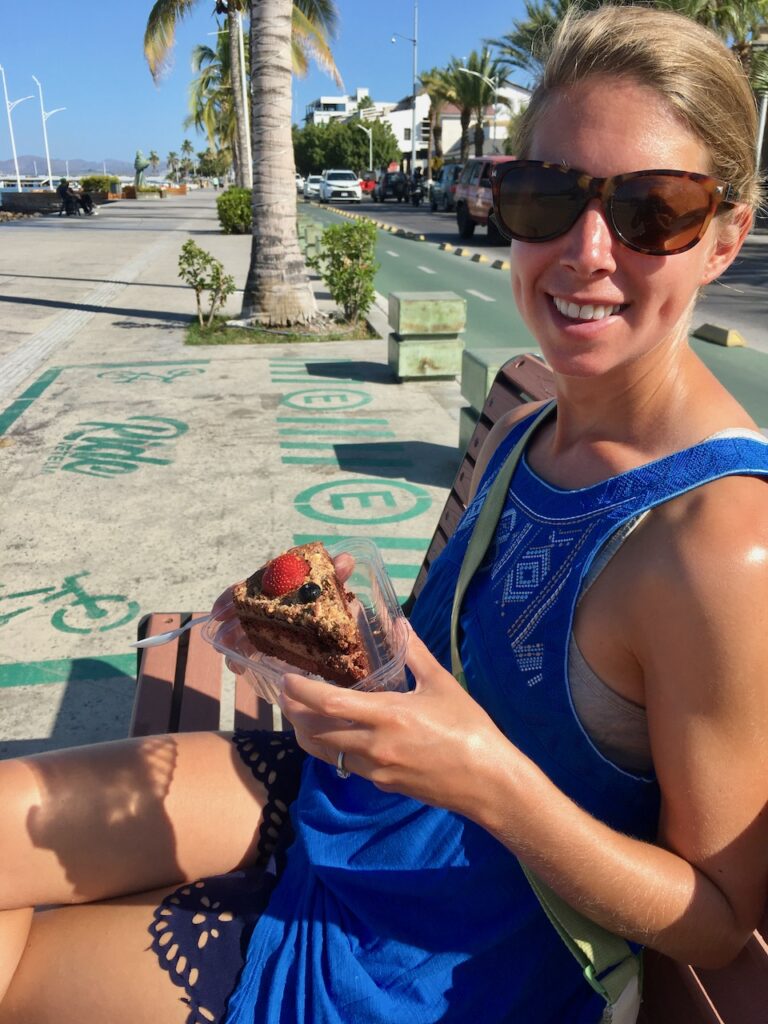
For those arriving here with their own vehicles, please come into this place with an open mind. The 4-way go’s that you will contend with take some getting used to. On that first day, cutting cross-town, block after block of one way streets of traffic barely slowing to cross, had me rattled. There were speed bumps. There were blocks I wanted to turn down but could not. There were vehicles not giving way, pedestrians, just about everything. Then you sort of get in the groove and very gradually it becomes ok.
This took more than one day. It took more than a couple. Our first visit to La Paz was somewhat tumultuous. I got caught again being overly thrifty with accommodation selection and Sarah was displeased. It’s so central, I stated. It’s a little prison box, she countered. The price is excellent, I contended, confident that would seal it. I’m booking my own place, she replied and so we did.
So we moved to a really interesting compound in a more residential area. The room was spacious with a wonderful kitchen (very important to me, so keep your eyes on this one because I have a feeling it will be the kitchen of the whole trip). The shower had pressure. The TV had Netflix. Sarah was right, it was a good switch. But…
There was a persistent ‘La Paz’ problem: you really didn’t want to venture out the front door. The more residential, the more perilous (or absent) the sidewalks. The farther from the center, the more prevalent the compounds/the more prevalent the angry dogs. It made you want to drive everywhere, which, as above, has its own issues.
The other problem was the wind. It was something we had become used to (all the way from home, to be honest), but here it was sending the surf up, spoiling some beaches even sending waves over the malecon. Yet we could see that there was more to explore here. The malecon was a wonder (see Sarah’s summary of running in La Paz). There were interesting eateries, hills to hike, beaches to explore, but on our first stay things failed to come together easily. Then, after our tour of the Cape, we returned.
A quick aside to say that I’ve pretty well had it with Airbnb. In Canada, at least, they have ceased to offer me better value over hotels. They are usually overpriced and unreliable and up to this point in the journey we had not used any. Except that now we were learning. For any stays over three nights, was the deal, we needed to search out an apartment to rent. The larger space, the kitchen, it was the path towards comfort, happiness, and a better trip. So for La Paz Part Two, I lined us up with a unit surprisingly close to our last place, but just closer enough to town to make all the difference. Our second visit to the capital of Baja Sur was entirely different.
This is a long way to say that you need to give the place a chance. By the time we loaded on the ferry after another five nights in town, I was sorry to be moving on. It revealed more to us with each day and we found out why there were so many people settling own here for a few weeks or a few months.
For things to do, the sea offers plenty. There are little bits of sand along the malecon where we would take Gidget and let her run free. The bay here is very sheltered, with calm warm waters and lots of boats. It’s also probably a bit foul so I would resist the temptation to swim. For that, unfortunately (but also good, so you can get away from the city) you need to drive to one of several beaches at the far end of the bay. Pichiligue was our favourite. Just past the ferry terminal is a perfect slice of beach, small, usually quiet and fine for swimming.
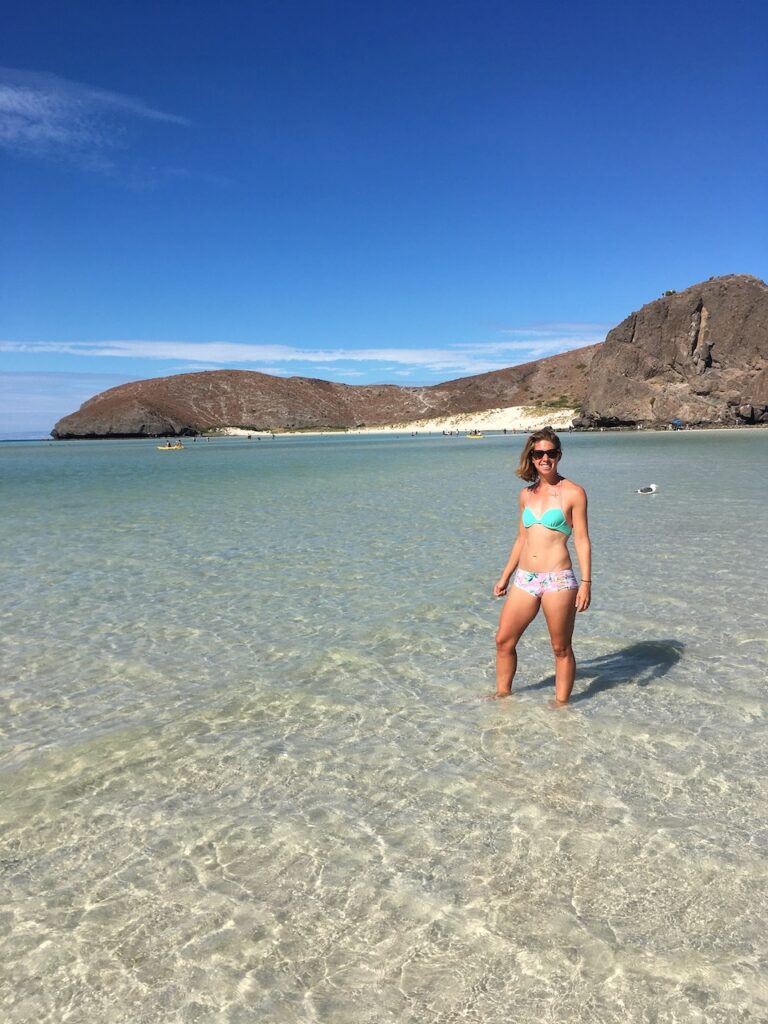
Then there is Playa Balandra which you have heard of already if doing some research for Mexico (more here at TripAdvisor, if that’s your thing). In many places, the beach is listed as the very best in all of Mexico. Not one of the best, but the tops. The rules have changed, are changing, will change again, so I’m not going to tell you when you can arrive or for how long you can stay. Just know that it’s likely to be controlled on your date of arrival in order to limit the number of visitors and therefore the impact on the ecosystem.
So what’s the fuss? Basically, people come for the perfect white sand, brilliant blue water, and the shallow series of bays that stretch on and on. I think we walked for the better part of a kilometer through knee, waist, knee, chest, and waist-high water before we could finally swim. This might not be for everyone, but can be offset if you hit the tides right.
Later, I climbed up to a nearby hill for a magnificent overlook of the whole place. Highly recommended. In this way, the site offers more than just a nice place for a swim. I wandered the south side at the mouth of the lagoon and found rays in the sand, interesting crabs and shorebirds very peeved at my persistent sloshing through the shallow water. You can also hike the ridges to nearby bays if the massive stretches of sand feel too crowded. Services are limited as is shade (we hid in a kind of sea cave where waves had once cut away the rock) so come prepared.
Finally, there are a number of tours available, the marine life around nearby islands rich and exciting. If the season is right (Dec through March I believe), you can swim with whale sharks, the world’s largest fish. This was a major lure. These animals look amazing and you’re all but promised to see one (or several). However, I feared it would not live up to my expectations so we chose to swim with a different marine animal: sea lions (or sea wolves, in Spanish).
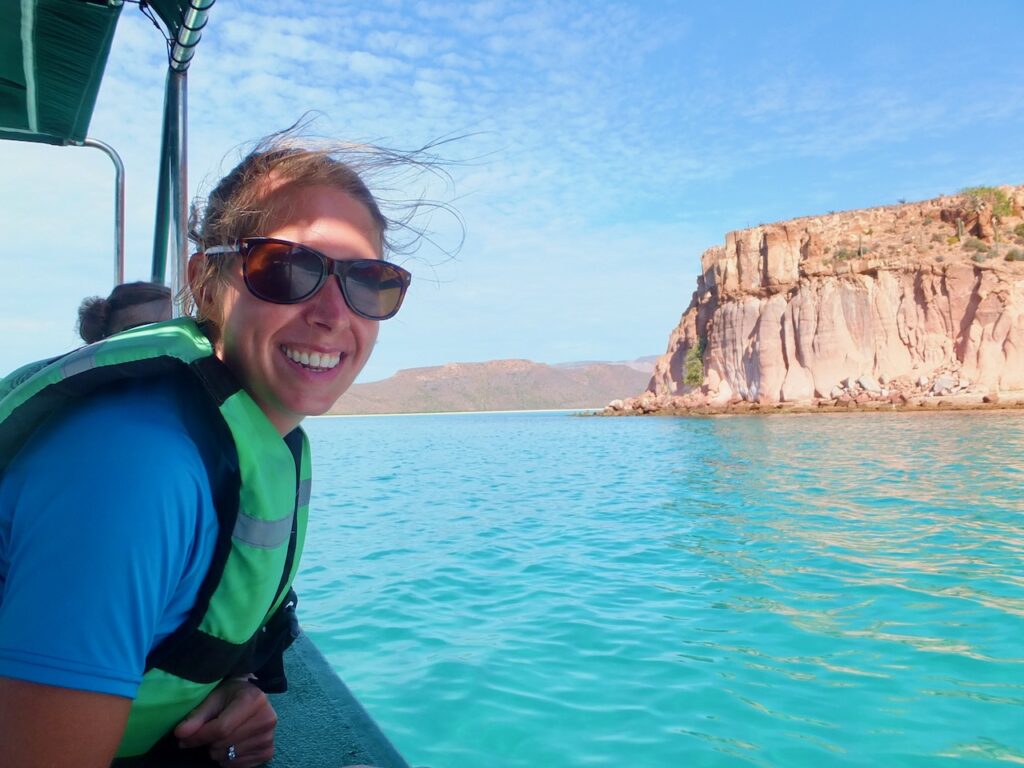
We went with Alonso Tours. There are a number of providers online, and more if you just show up at the jetty in the morning, but these guys seemed very competitively priced without losing anything in quality. They’re all quite similar so don’t think about it too much. We walked to meet the boat (thankfully not too early) and we were off on an hour long journey across the bay to Espiritu Santo Island.
The island is quite stunning, if we only gazed at it from a distance. The sand and rock forms layers of various colours and textures. Steep cliffs separate beautiful bays where the water is the perfect blue-green shade, contrasting with desert red. The boat will head into one of these bays where you get a close-up of a frigate bird colony, the water so clear you can see down to the bottom. No one lives here now, but apparently the place was the base for a nascent pearl industry way back in the formative years of La Paz.
Then it’s onward to the north end of the island, through(!) a narrow, naturally formed archway and to a collection of islets where a colony of some 700 California sea lions dwell. Even from the boat, you will see so many of them just hanging out on the rocks: big males, little pups, in and out of the water, and making a lot of racket. Then with fins, masks and lifejackets on, our group jumped into the water (colder out here). For the safety of the animals and the marine park, it’s a tightly controlled swim. You have to wear the lifejacket, follow the guide, our time limited. This was no problem – you will see plenty. Big, seven foot long males will swim far below you, kind of leery, kind of annoyed by our presence. The young ones are more curious and zipped around us as though daring each other how close they could get. Then we would scare each other and they swam out of sight. We even spotted a cormorant swimming beneath us in search of a meal. At one point, our guide took a peek in a sea cave to see if we could spot some pups. He was met with a loud bark by a mother and we moved on.
The final stop is lunch on a nearby beach. At the time, I think I took our location for granted. Looking back, it was a stunning piece of sand with calm warm waters to spend a couple hours. Snorkeling was an option, but unfortunately there was little to see. I’m not sure why. On the way back we were greeted by a dozen or so dolphins, gleefully playing in the waves.
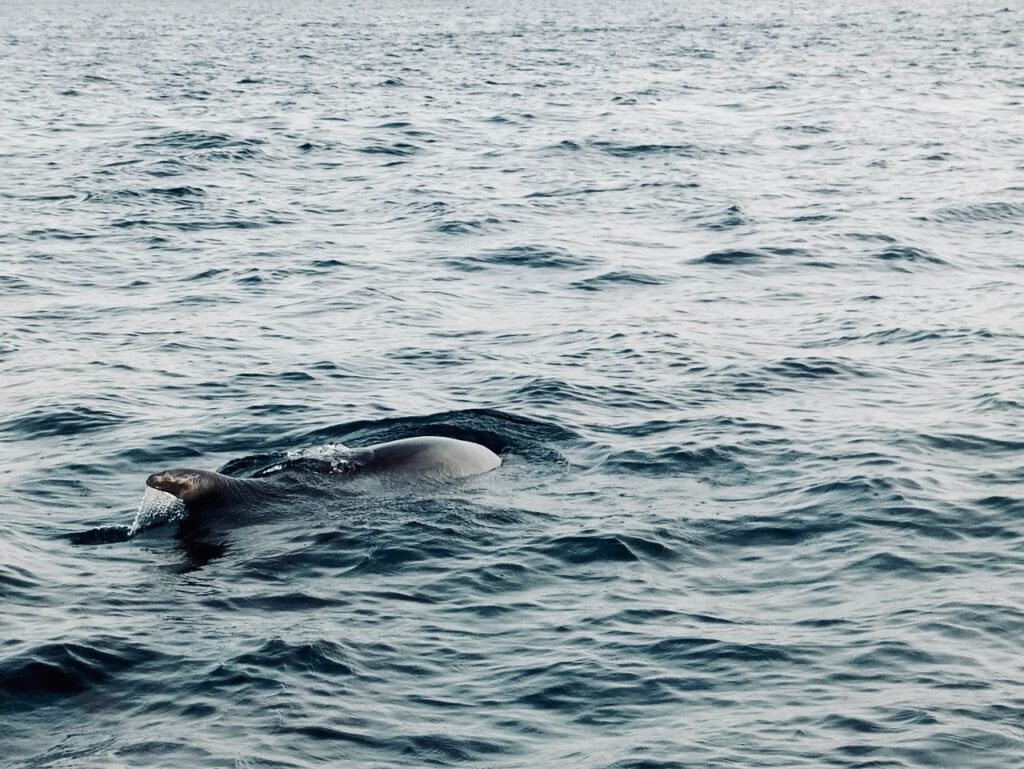
La Paz the sequel brought better weather, more adventures and the luck to unlock what makes this place so interesting and varied. I recommend!
Coming up, a summary of our experience taking Baja Ferries from La Paz to Mazatlán, leaving the Baja behind… [My summary of the region is here]
*Fun aside! We are not a ‘phone’ family. I had not used a GPS device prior to this trip (see some tales from the journey down to get an idea). I don’t like the idea of relying on a map. It’s a distraction and I see too many people who have no idea how to get around as soon as they are without the help of Mr. Google. I also don’t want to be tracked so even as I relented to the need for a map I first chose an application that supported OpenStreet. Alas, it was not as good. After some ok results, it led me to the wrong place altogether and I scrapped it, crawling back as I suppose everyone does to Google Maps…
You May Also Like
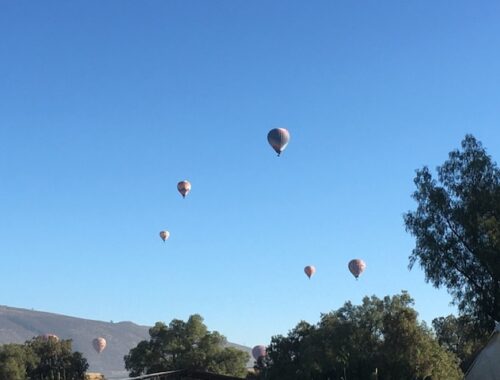
Navigating CDMX
January 15, 2023
Pit Stop in Campeche
January 19, 2023

